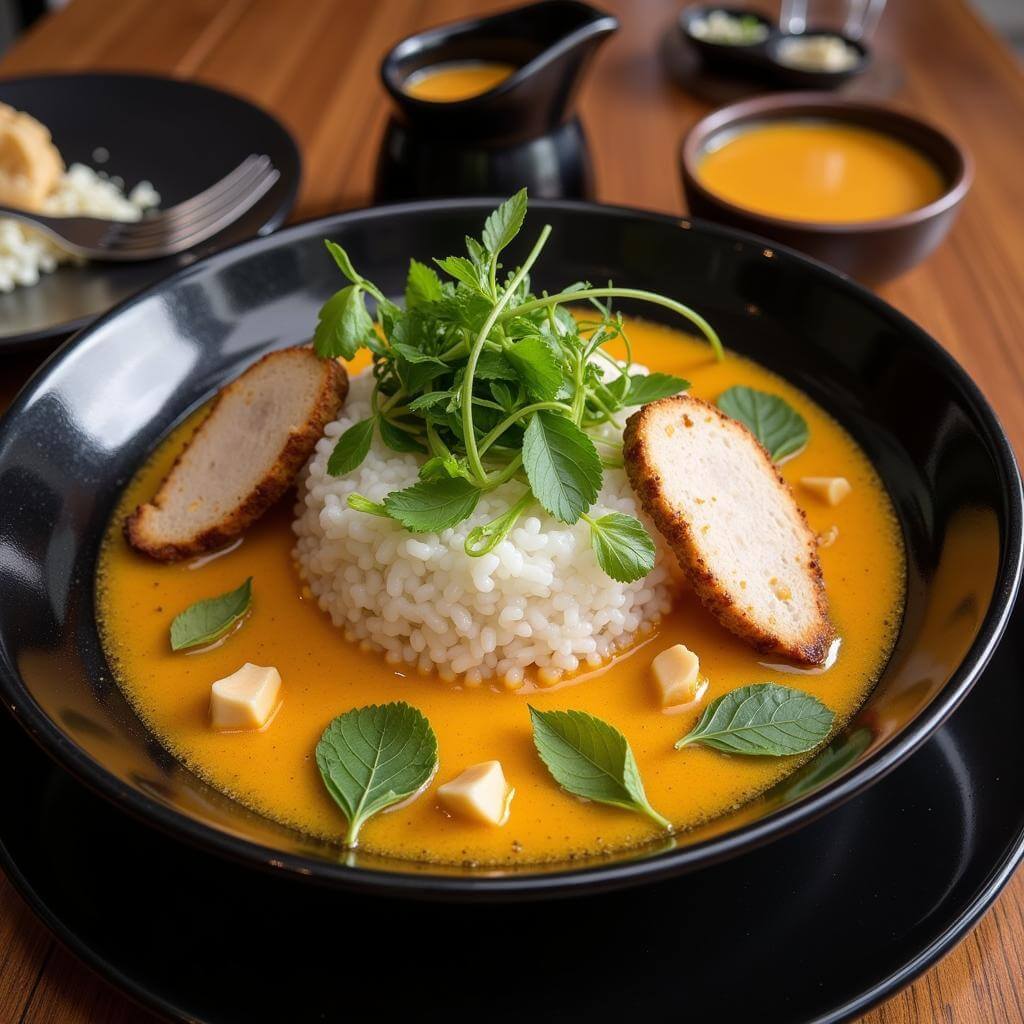The IELTS Speaking test often includes questions about food and culinary experiences. One common topic is describing a dish you recently tried and enjoyed. This type of question allows examiners to assess your vocabulary, fluency, and ability to express personal experiences. Let’s explore how to answer this question effectively and maximize your score.
Part 1: Introduction and Interview
In Part 1, the examiner may ask general questions about food and eating habits. Here are some possible questions:
- Do you enjoy trying new foods?
- What’s your favorite type of cuisine?
- How often do you eat out at restaurants?
Let’s focus on the first question as an example:
Examiner: Do you enjoy trying new foods?
Band 6-7 Answer:
“Yes, I do. I think it’s interesting to taste different dishes from various cultures. It’s a great way to learn about other countries and their traditions.”
Band 8-9 Answer:
“Absolutely! I’m quite the adventurous eater and relish the opportunity to expand my culinary horizons. Trying new foods not only tantalizes my taste buds but also provides a fascinating glimpse into different cultures and their culinary traditions. It’s like taking a mini gastronomic journey without leaving my hometown.”
Part 2: Long Turn (Cue Card)
Here’s a sample cue card related to describing a dish you recently tried and enjoyed:
Describe a dish you tried recently and enjoyed
You should say:
- What the dish was
- Where you ate it
- Who you were with
- And explain why you enjoyed it
Band 6-7 Answer:
“I’d like to talk about a delicious pasta dish I tried last month at a new Italian restaurant in my city. It was called ‘Spaghetti alle Vongole,’ which is spaghetti with clams. I went there with my best friend for her birthday dinner.
The dish was really tasty. It had perfectly cooked spaghetti with lots of small clams, garlic, olive oil, and parsley. The flavor was amazing – you could taste the sea in the clams, and the garlic wasn’t too strong. I especially liked how light it felt compared to other pasta dishes with heavy cream sauces.
I enjoyed this dish because it was something new for me. I don’t often eat seafood pasta, so it was a nice change. The combination of flavors was really well-balanced, and the pasta was cooked just right – not too soft or hard. Also, the atmosphere of the restaurant and the company of my friend made the whole experience very enjoyable.”
Band 8-9 Answer:
“I’d be delighted to share my experience of a culinary gem I recently discovered. The dish in question was a gastronomic masterpiece called ‘Deconstructed Laksa,’ which I had the pleasure of savoring at a cutting-edge fusion restaurant that recently opened in the heart of our city.
This innovative take on the traditional Malaysian soup was a feast for the senses. The chef had artfully arranged the components of laksa on the plate – a mound of perfectly cooked rice noodles, a succulent piece of sous-vide chicken, an array of fresh herbs, and a velvety coconut curry sauce served in a small jug on the side. The presentation was nothing short of spectacular.
I experienced this culinary adventure with my colleague, who’s quite the food enthusiast. We decided to treat ourselves after successfully completing a challenging project at work.
What made this dish truly exceptional was the way it elevated a familiar comfort food to new heights. The flavors were impeccably balanced – the richness of the coconut milk harmonized beautifully with the aromatic spices, while the fresh herbs provided a refreshing contrast. The texture play was remarkable, with the silky sauce, tender chicken, and perfectly al dente noodles creating a symphony in my mouth.
Moreover, the deconstructed nature of the dish allowed me to customize each bite, creating a slightly different flavor profile every time. This interactive element added an extra layer of enjoyment to the meal.
In essence, this dish epitomized the perfect fusion of traditional flavors and modern culinary techniques. It not only satiated my hunger but also ignited my culinary imagination, leaving me with a newfound appreciation for innovative cooking.”
 Deconstructed Laksa fusion dish presentation
Deconstructed Laksa fusion dish presentation
Follow-up questions:
- How often do you try new dishes?
- Do you prefer cooking at home or eating out?
Band 6-7 Answer for Question 1:
“I try to taste new dishes at least once a month. I think it’s important to vary my diet and discover new flavors. It keeps meals interesting and helps me learn about different cuisines.”
Band 8-9 Answer for Question 1:
“I make it a point to broaden my culinary horizons on a regular basis, aiming to sample novel dishes at least bi-weekly. This gastronomic exploration not only tantalizes my taste buds but also serves as a window into diverse cultures. It’s a delightful way to keep my palate educated and prevent culinary monotony.”
Part 3: Two-way Discussion
Examiner: How do you think food trends have changed in recent years?
Band 6-7 Answer:
“I think food trends have changed quite a lot recently. People seem more interested in healthy eating now, with many choosing organic or plant-based diets. There’s also been a rise in fusion cuisine, mixing different cultural foods. Social media has played a big role too, with people sharing photos of their meals online.”
Band 8-9 Answer:
“The culinary landscape has undergone a significant transformation in recent years. We’ve witnessed a paradigm shift towards more health-conscious eating habits, with a surge in popularity of plant-based diets, superfoods, and organic produce. This trend reflects a growing awareness of the intrinsic link between diet and overall well-being.
Simultaneously, there’s been a renaissance of traditional cuisines, with chefs and food enthusiasts delving into their cultural roots to revive and reimagine age-old recipes. This has dovetailed beautifully with the rise of fusion cuisine, creating exciting culinary hybrids that push the boundaries of traditional flavor combinations.
The advent of social media has also revolutionized how we interact with food. Platforms like Instagram have turned meal-sharing into a visual art form, influencing not just what we eat, but how food is presented. This has led to the rise of ‘Instagrammable‘ dishes and restaurants designed with social media aesthetics in mind.
Lastly, there’s been a growing emphasis on sustainability and ethical consumption in the food industry. From farm-to-table movements to reducing food waste, consumers are becoming increasingly conscientious about the environmental and social impact of their dietary choices. This shift is reshaping not just individual eating habits, but the entire food supply chain.”
 Social media influence on food presentation
Social media influence on food presentation
Key Vocabulary and Phrases for High Scores
-
Gastronomic /ˌɡæs.trəˈnɒm.ɪk/ (adjective): Related to the art of cooking and eating good food.
Example: “The city is known for its gastronomic delights.” -
Culinary /ˈkʌl.ɪ.nər.i/ (adjective): Connected with cooking or kitchens.
Example: “She’s pursuing a career in the culinary arts.” -
Palate /ˈpæl.ət/ (noun): A person’s ability to distinguish between and appreciate different flavors.
Example: “Years of tasting wines have refined his palate.” -
Fusion /ˈfjuː.ʒən/ (noun): A combination of different styles or elements, especially in cooking.
Example: “The restaurant specializes in Asian-Latin fusion cuisine.” -
Innovative /ˈɪn.ə.və.tɪv/ (adjective): Introducing new ideas; original and creative in thinking.
Example: “The chef’s innovative approach to traditional dishes has earned him multiple awards.” -
Tantalizing /ˈtæn.təl.aɪ.zɪŋ/ (adjective): Exciting one’s senses or desires.
Example: “The tantalizing aroma of freshly baked bread filled the air.”
Examiner’s Advice
To excel in the IELTS Speaking test when describing a dish:
- Use a variety of descriptive adjectives to bring your experience to life.
- Incorporate food-related idioms and expressions to demonstrate language proficiency.
- Structure your response logically, covering all points in the cue card.
- Practice describing different dishes to improve fluency and expand your culinary vocabulary.
- Be prepared to discuss broader topics related to food in Part 3, such as cultural significance, health trends, or environmental impacts of food production.
Remember, the key to a high score is not just about what you say, but how you say it. Aim for fluency, coherence, and a range of vocabulary and grammatical structures.
describe a traditional dish in your culture that you want to learn to cook to further enhance your culinary vocabulary and cultural knowledge for the IELTS Speaking test.


